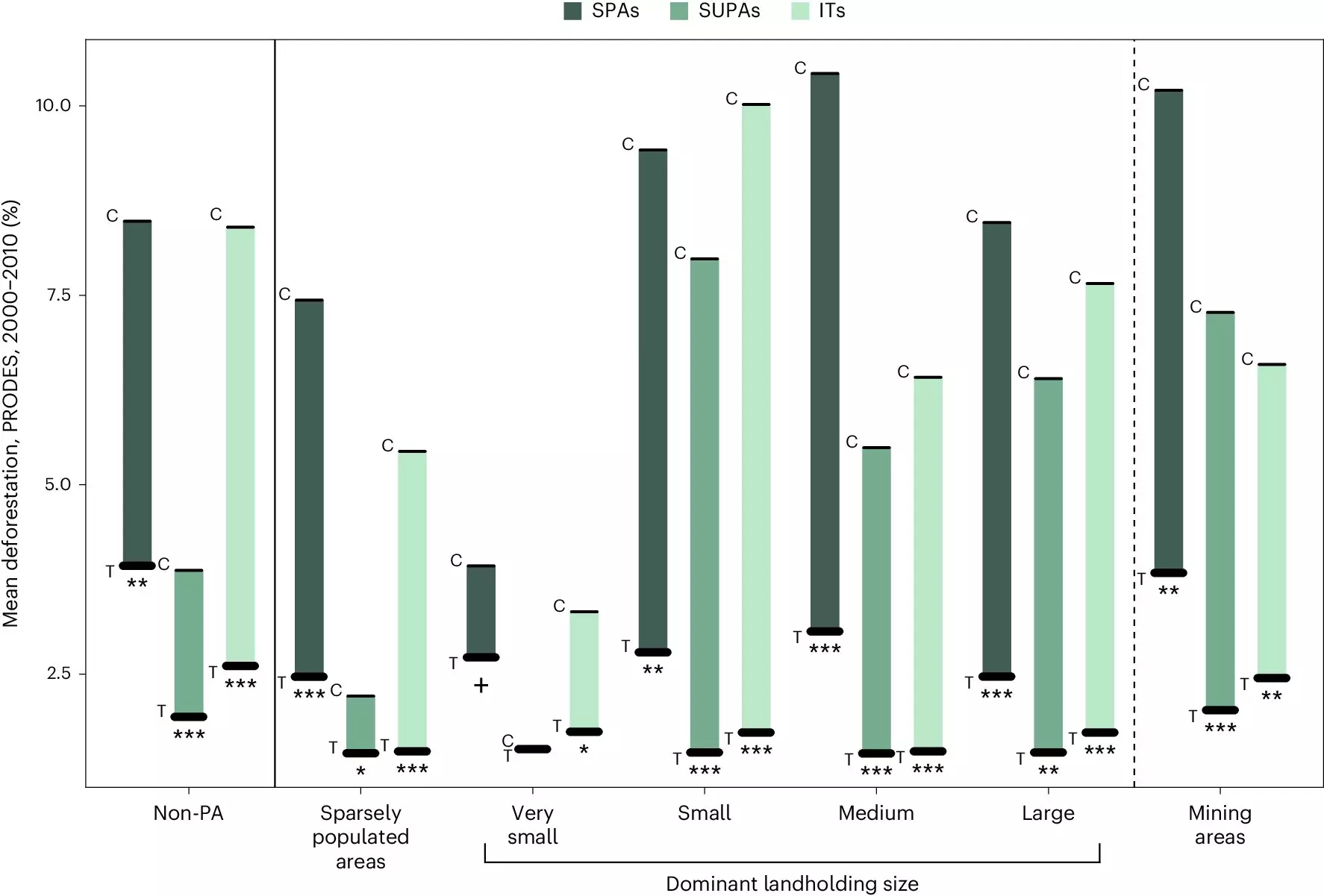The Brazilian Legal Amazon (BLA) has been a focal point for land protection initiatives aimed at reducing deforestation in the region. A recent analysis has shown that these initiatives have been successful in reducing deforestation by up to 83% between 2000 and 2010. These results underscore the importance of land protection policies in achieving ambitious goals, such as the UN biodiversity target to protect 30% of the planet’s surface by 2030. However, despite the significant progress made, more comprehensive solutions are needed to address the ongoing challenges of biodiversity loss and climate change in the Amazon.
While land protection initiatives have led to positive environmental outcomes, such as reduced deforestation, they have also come with hidden socio-economic costs, particularly for Indigenous communities in the Amazon. A study found that incomes in Indigenous Territories (ITs) were up to 36% lower compared to other land uses. This highlights the trade-offs that decision-makers must consider when implementing and expanding forest conservation projects in the region. The analysis looked at three types of protection arrangements – Indigenous Territories, strict protected areas (SPAs), and sustainable use protected areas (SUPAs) – to understand the environmental and socio-economic impacts of these initiatives.
Indigenous communities in the Amazon are among the most disadvantaged groups in Brazil, with 33% living below the poverty line. It is crucial to ensure that efforts to secure land rights for Indigenous peoples are accompanied by additional initiatives to address their socio-economic needs. This includes removing barriers to access existing social protection programs and providing other forms of support to prevent further marginalization of these communities. Dr. Johan Oldekop emphasizes the importance of balancing conservation efforts with the development needs of Indigenous peoples to create more sustainable and equitable outcomes.
While Indigenous Territories have shown promise in preventing deforestation and preserving biodiversity, it is essential for policymakers to carefully weigh the benefits and drawbacks of different land use options to balance conservation and development goals effectively. Dr. Marina Schmoeller emphasizes the critical role of Indigenous territories in protecting biodiversity, especially in light of ongoing debates in the Brazilian Supreme Court that could impact Indigenous land rights across the country. Dr. Karl Evans highlights the effectiveness of protected areas and Indigenous Territories in reducing deforestation in the Amazon region.
The relationship between land protection initiatives and deforestation in the Brazilian Amazon is complex and multifaceted. While these initiatives have been successful in reducing deforestation rates, they also come with socio-economic costs that disproportionately affect Indigenous communities. It is essential for policymakers, researchers, and stakeholders to work together to develop more comprehensive and inclusive approaches to conservation and development in the region. By recognizing and addressing these challenges, we can strive towards a more sustainable and equitable future for the Amazon and its inhabitants.


Leave a Reply